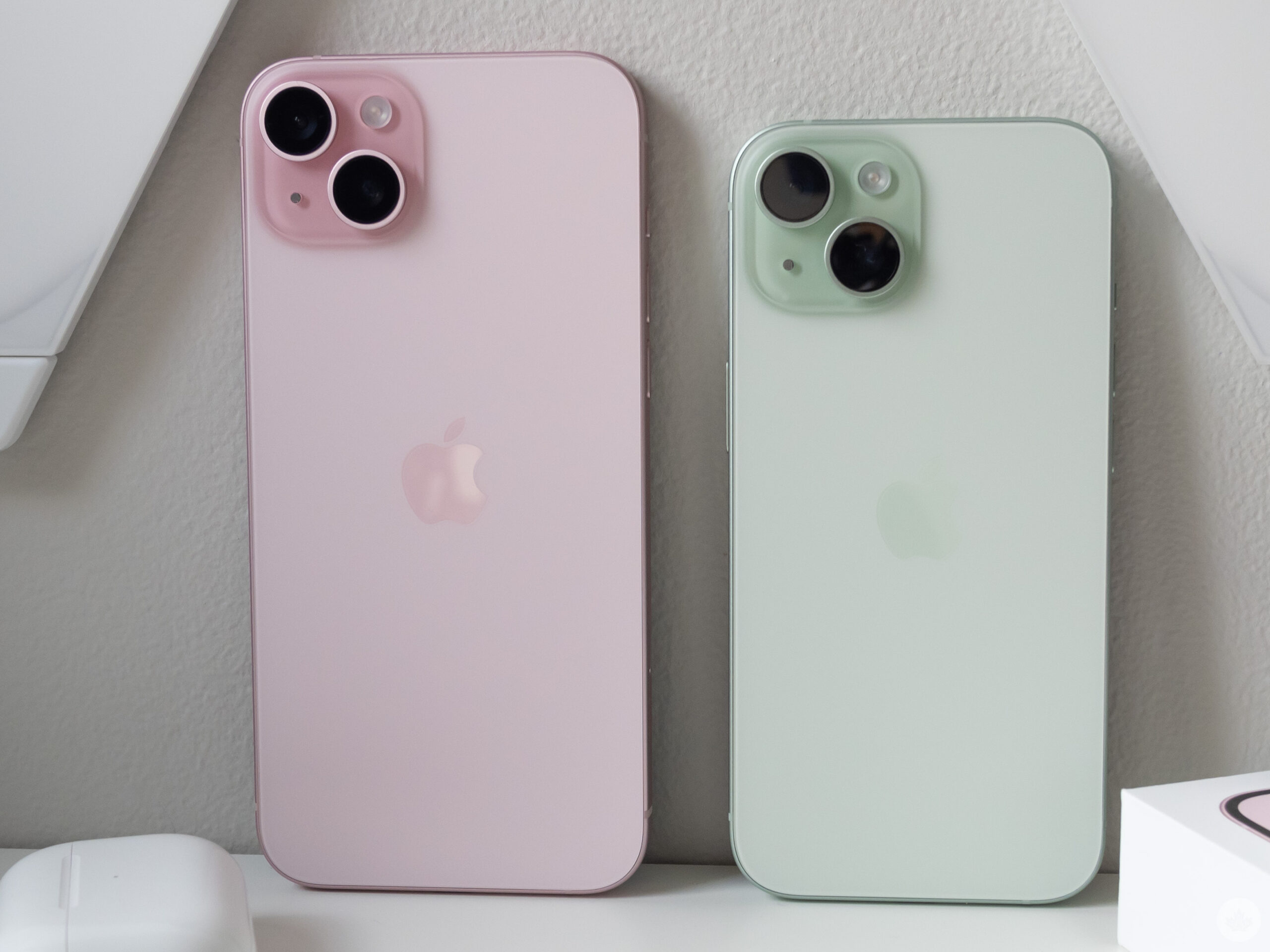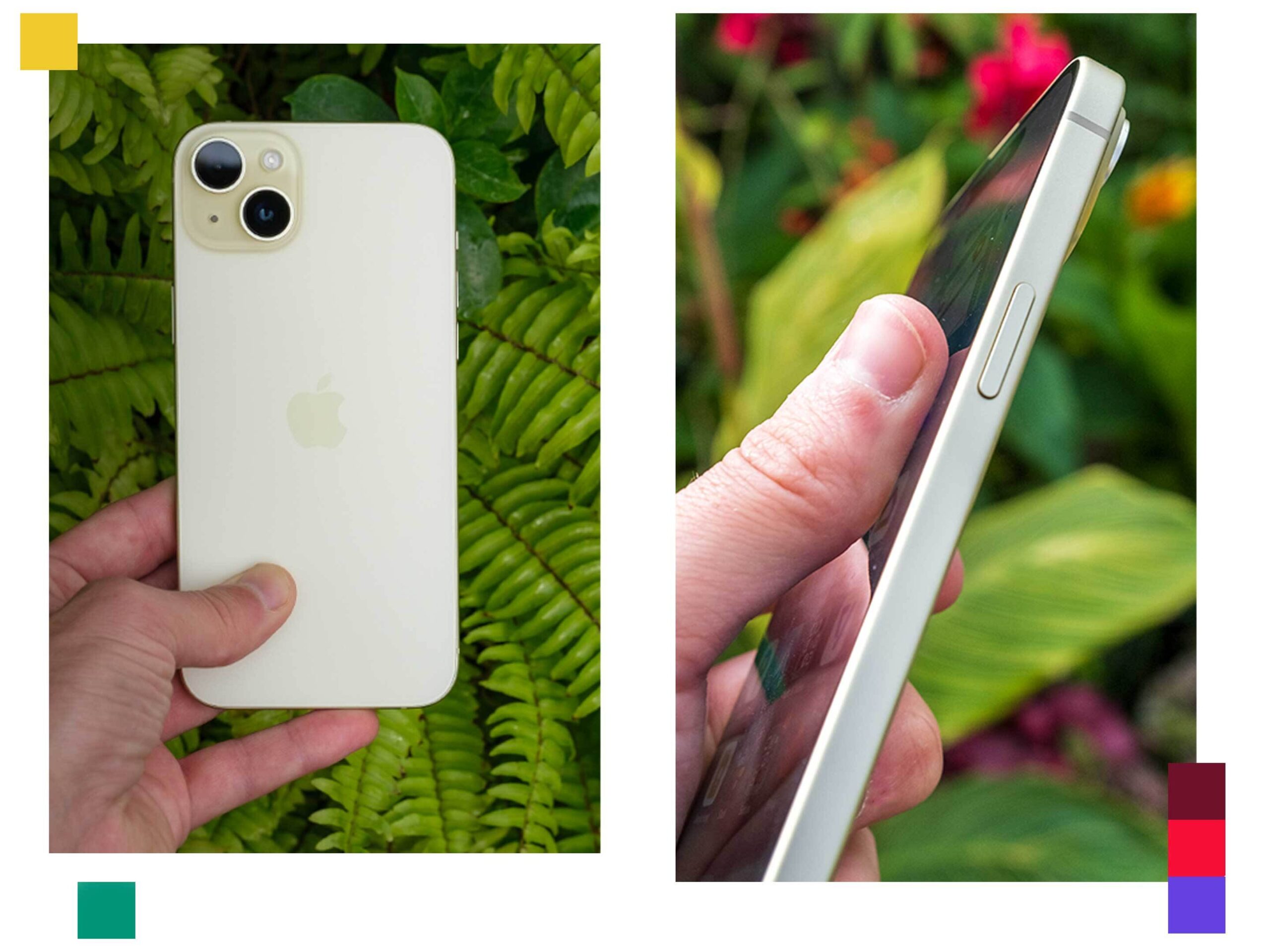
The Pros
- Great design upgrade
- 2x sensor crop zoom
- Dynamic Island
The Cons
- No higher refresh rate display
- Only USB-C 2.0
- No Action button
My key takeaway from my time with the iPhone 15 is that the lines between the ‘Pro’ and the base-level iPhone have blurred.
From a main shooter that matches last year’s iPhone 14 Pro in key ways to the ‘Dynamic Island’ and a design that feels notably more premium than any other base-level iPhone, what’s been true in years past is even more accurate now — the iPhone 15 and iPhone 15 Plus are the best smartphones for most Apple users.
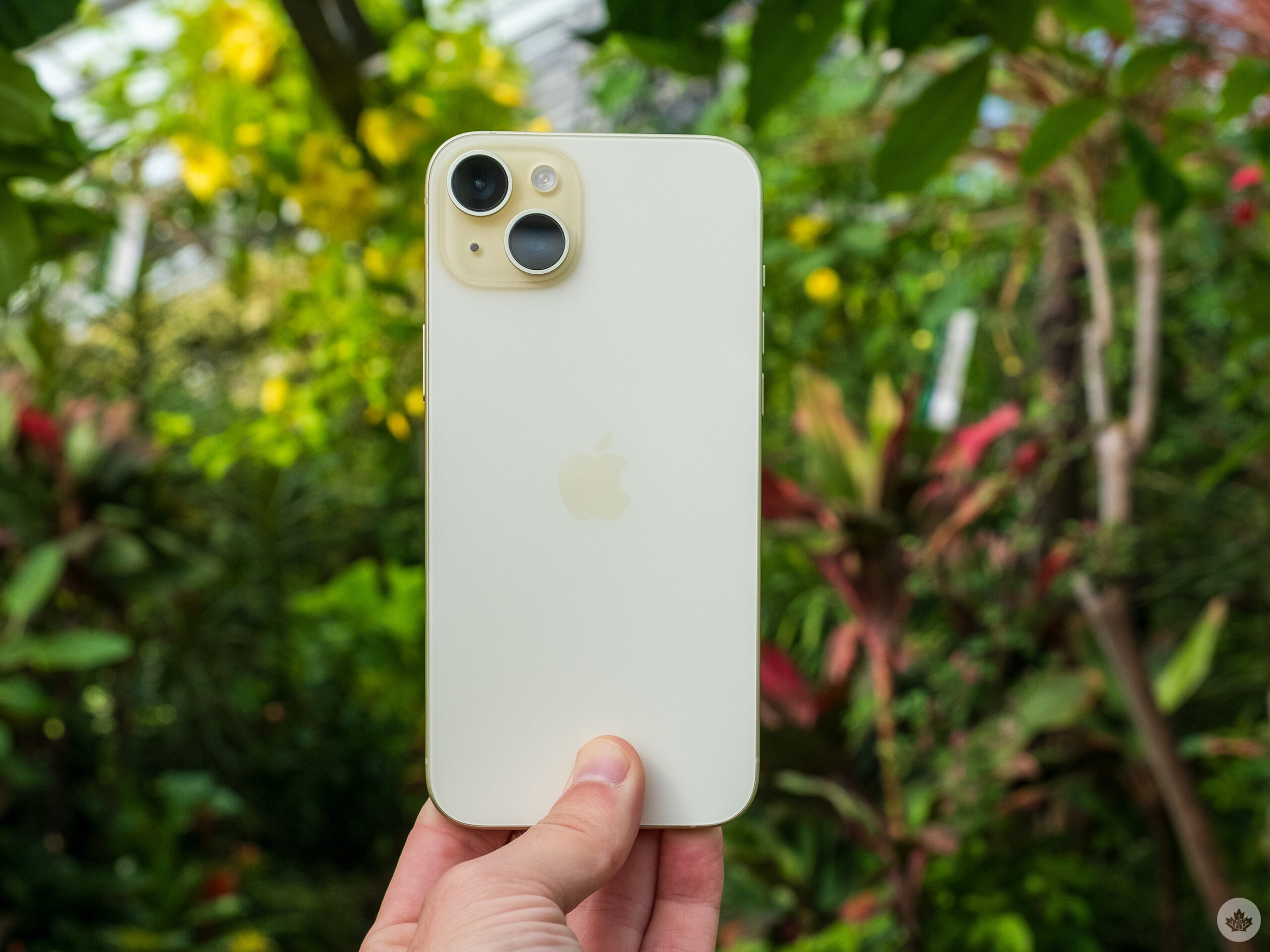
The iPhone 15’s new yellow colour is stunning. Image credit: Bradley Bennett
Still, the iPhone 15 doesn’t offer a perfect experience, and a few notable missing features hold the smartphone behind several Android devices in terms of features.
For my review of the iPhone 15 Pro and iPhone 15 Pro Max, follow this link. Note: Photography samples included in this review have been compressed by our backend.
iPhone 15
iPhone 14
Display
6.1-inch, Super Retina XDR, OLED True Tone display, 2532 x 1170 pixels, HDR 10, Dolby Vision
6.1-inch, Super Retina XDR, OLED True Tone display, 2532 x 1170 pixels, HDR 10, Dolby Vision
Processor
A16 Bionic chip
A15 Bionic chip
RAM
N/A
N/A
Storage
128GB, 256GB, 512GB
128GB, 256GB, 512GB
Dimensions (in.)
146.7 x 71.5 x 7.65mm
146.7 x 71.5 x 7.65mm
Weight
172g
172g
Rear Facing Camera
48-megapixel (f/1.6, OIS, wide) + 12-megapixel (f/2.4, OIS, ultra-wide)
12-megapixel (f/1.5, OIS, wide) + 12-megapixel (f/2.4, OIS, ultra-wide)
Front Facing Camera
12-megapixel (f/1.9)
12-megapixel (f/1.9)
OS
iOS 17
iOS 16
Battery
N/A
Up to 20 hours of video playback
Network Connectivity
LTE/ 5G
LTE/ 5G
Sensors
Face ID, Three axis gyro, Accelerometer, Ambient light sensor, Barometer
Face ID, Three axis gyro, Accelerometer, Ambient light sensor, Barometer
SIM Type
Nano SIM, eSIM
Nano SIM, eSIM
Launch Date
September 23, 2023
September 16, 2022
Misc
Colours: Pink, Yellow, Green, Blue, Black
Colours: Midnight, Purple, Product Red, Blue, Starlight
Display
iPhone 15
6.1-inch, Super Retina XDR, OLED True Tone display, 2532 x 1170 pixels, HDR 10, Dolby Vision
iPhone 14
6.1-inch, Super Retina XDR, OLED True Tone display, 2532 x 1170 pixels, HDR 10, Dolby Vision
Processor
iPhone 15
A16 Bionic chip
iPhone 14
A15 Bionic chip
RAM
iPhone 15
N/A
iPhone 14
N/A
Storage
iPhone 15
128GB, 256GB, 512GB
iPhone 14
128GB, 256GB, 512GB
Dimensions (in.)
iPhone 15
146.7 x 71.5 x 7.65mm
iPhone 14
146.7 x 71.5 x 7.65mm
Weight
iPhone 15
172g
iPhone 14
172g
Rear Facing Camera
iPhone 15
48-megapixel (f/1.6, OIS, wide) + 12-megapixel (f/2.4, OIS, ultra-wide)
iPhone 14
12-megapixel (f/1.5, OIS, wide) + 12-megapixel (f/2.4, OIS, ultra-wide)
Front Facing Camera
iPhone 15
12-megapixel (f/1.9)
iPhone 14
12-megapixel (f/1.9)
OS
iPhone 15
iOS 17
iPhone 14
iOS 16
Battery
iPhone 15
N/A
iPhone 14
Up to 20 hours of video playback
Network Connectivity
iPhone 15
LTE/ 5G
iPhone 14
LTE/ 5G
Sensors
iPhone 15
Face ID, Three axis gyro, Accelerometer, Ambient light sensor, Barometer
iPhone 14
Face ID, Three axis gyro, Accelerometer, Ambient light sensor, Barometer
SIM Type
iPhone 15
Nano SIM, eSIM
iPhone 14
Nano SIM, eSIM
Launch Date
iPhone 15
September 23, 2023
iPhone 14
September 16, 2022
Misc
iPhone 15
Colours: Pink, Yellow, Green, Blue, Black
iPhone 14
Colours: Midnight, Purple, Product Red, Blue, Starlight
Pro-like design

The Dynamic Island is now included in the iPhone 15 and iPhone 15 Plus. Image credit: Patrick O’Rourke
The contoured edge from the iPhone 15 Pro also makes its way to the iPhone 15, giving the smartphone subtly chamfered edges. This makes the device more comfortable to hold in your hand and helps it stand out from other recent iPhones, but it’s a minor design change some people likely won’t even notice. Overall, the iPhone 15 feels a lot like the iPhone 15 Pro, blurring the line between the two tiers of devices regarding design. In fact, I’d go so far as to say I prefer the iPhone 15’s look over the iPhone 15 Pro because of its unique matte colours.
Speaking of colours, this is my favourite line-up of base-level iPhone hues since the iPhone XR. They’re washed out in a unique way, but can still look intense under certain lighting conditions, especially ‘Yellow’ and ‘Pink.’ This year’s complete array of colours also includes ‘Black,’ ‘Blue’ and ‘Green.’
“…higher refresh rate display technology is becoming increasingly common in smartphones and it’s sort of thing that once you see, it’s difficult to go back to a standard 60Hz screen.”
Next, there’s the Dynamic Island coming to the iPhone 15. I think the unique display cutout is a great feature, but it’s been a year since it was released and few apps take advantage of it. I’m hoping that now that it’s hit the entire iPhone 15 lineup, that will change, and more third-party developers will find cool ways to take advantage of it. We won’t know for sure until a few months after the iPhone 15 releases, but I’m pretty certain we’ll soon see more apps utilize the Dynamic Island.
It’s worth noting that the iPhone 15/iPhone 15 Plus’ 6.1-inch/6.7-inch display still doesn’t feature a refresh rate above 60Hz. This is difficult to excuse in an industry full of entry-level 90Hz Android smartphones like the Pixel 7a. However, I’ve argued in the past that this is a feature few iPhone 15 buyers will care about, and that still stands true (you can’t miss what you don’t have).
Still, higher refresh rate display technology is becoming increasingly common in smartphones, and it’s the sort of thing that once you see, it’s difficult to go back to a standard 60Hz screen. While the iPhone 15’s screen looks stellar and comparable to the iPhone 15 Pro’s, ghosting when scrolling through iOS is very apparent throughout, especially when you’re used to faster refresh rate displays.
Other missing features when compared to the iPhone 15 Pro include the lack of an Action button and no optical zoom (more on this later). While I like the Pro series’ new Action button, it’s the definition of a “nice-to-have feature” that’s not totally necessary.
Say hello to USB-C
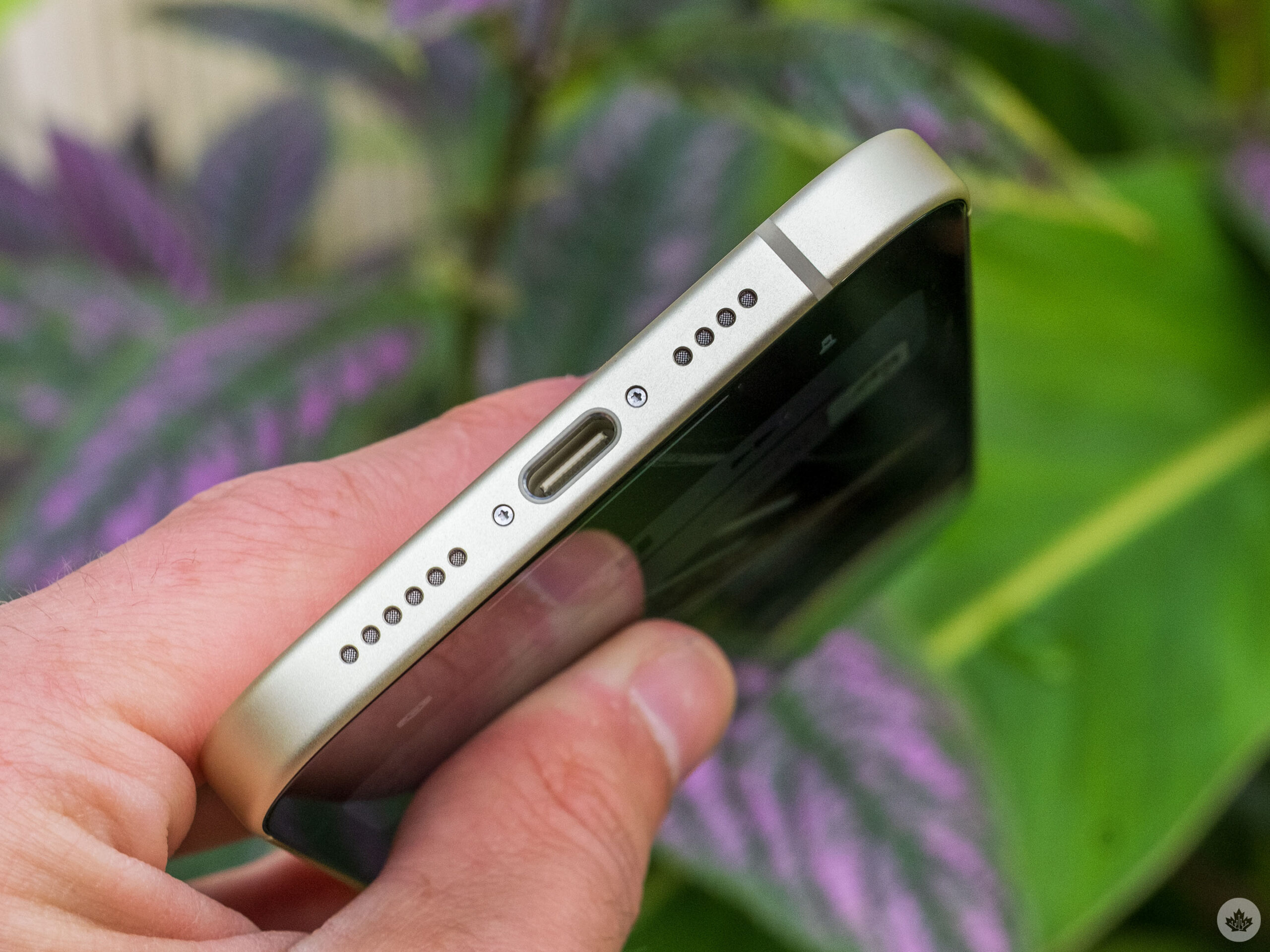
USB-C has finally made its way to the iPhone line, but with the iPhone 15 and iPhone 15 Plus, it’s only at USB 2.0 speeds. Image credit: Bradley Bennett
Will this matter to most iPhone users, especially those interested in the iPhone 15? Probably not, since even I can’t remember the last time I plugged my iPhone into my computer, but it’s disappointing nonetheless. Further, while the switch to USB-C is long overdue, the transition won’t be without a few bumps, especially for the iPhone 15’s average Apple user target audience that likely doesn’t know the difference between the new port and Apple’s proprietary Lightning cable.
There will be a lot of Lightning cables and accessories thrown out over the next few years. With this in mind, it would be great if Apple launched a recycling program of some sort.
Killer camera features
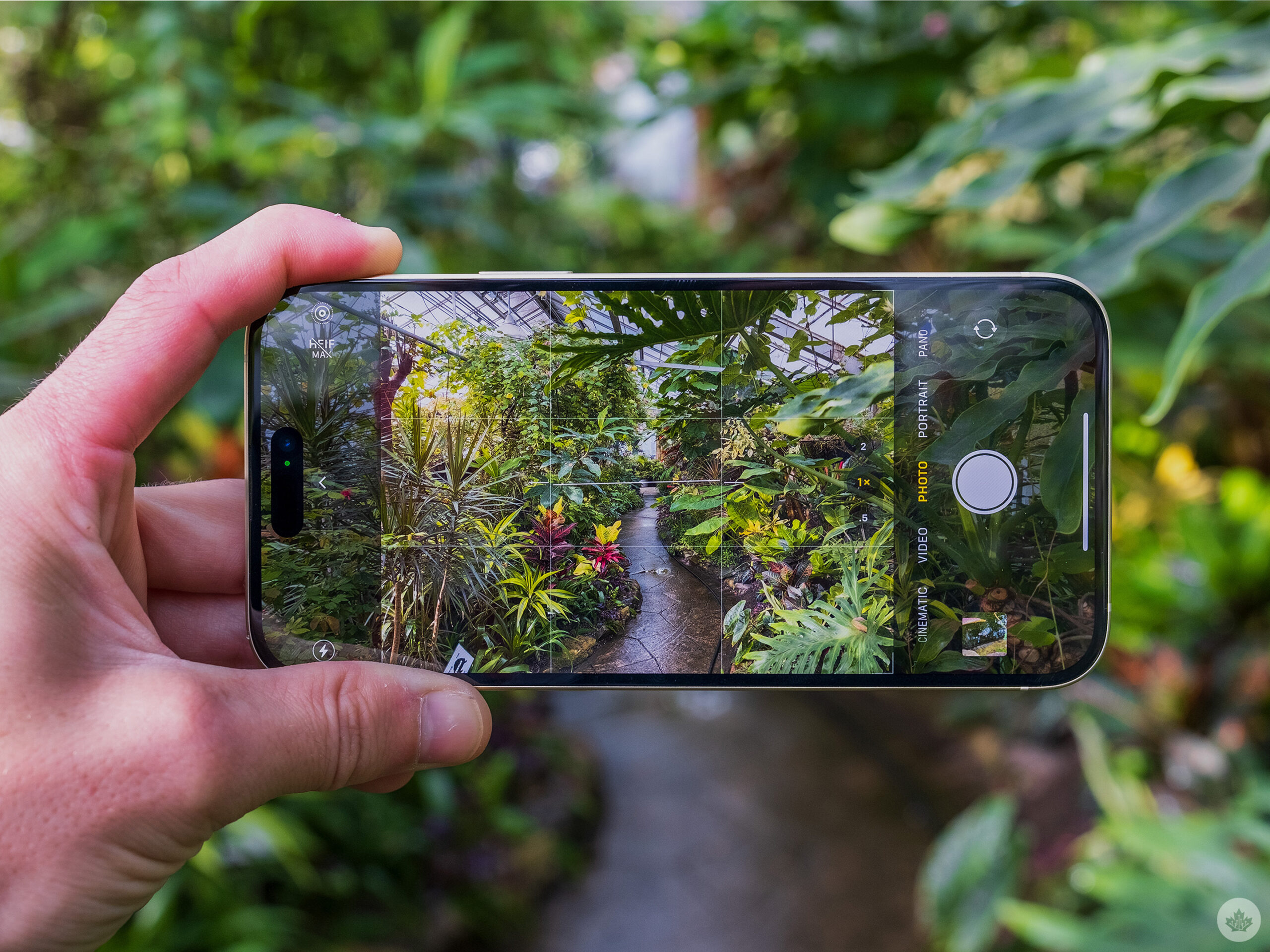
The iPhone 15 includes all of the camera features most people will care about. Image credit: Bradley Bennett
Here’s where the real upgrades over the iPhone 14 start. The iPhone 15 and iPhone 15 Plus feature a new 48-megapixel f/1.6 26mm lens that’s nearly identical to the iPhone 14 Pro’s. The pixel size is slightly smaller, but it unlocks 2x sensor crop zoom.
Like the iPhone 14 Pro series, its main camera bins down its sensor to shoot 12-megapixel photos by default. In the Settings app, you can set it to capture 24-megapixels instead for a bit of extra detail. If you want to take that a step further, there’s a new ‘HEIF Max’ photo mode that snaps a full 48-megapixel capture. While it’s not ProRaw, it’s a nice addition for photographers looking to get a little extra out of the iPhone 15 camera. In my tests, it offers slightly more detail, but you need to zoom in significantly to notice a difference.


Overall, the iPhone 15’s camera takes photos on par with the iPhone 14 Pro. Even when really hunting for differences between the two images above and zooming in, they look pretty much the same. There’s great detail, solid light control and useful computational photography effects.
The 2x sensor crop zoom uses the middle of the new sensor to take full 12-megapixel images. It isn’t quite as high-quality as Apple’s optical implementation, but it’s shockingly close and a notable step above digital zoom, which I’ve always found to be far too noisy. Very few people will notice the quality difference between optical and sensor cropping, but they’ll all enjoy the extra zoom range in this year’s iPhone.
Adding optical zoom to the iPhone 15 without needing an additional lens is part of what makes it feel more ‘pro’ than before. Just a few years ago, the iPhone 12 Pro only had a 2x zoom. For years, I’ve felt telephoto zoom is more useful than an ultrawide camera, so it’s great to see it finally come to the iPhone 15.




Above are examples of the iPhone 15’s impressive 2x zoom in action. The siding on the shed may have a little more detail, but even then, the difference is minimal. In the second set of photos, the sailboats in the distance are a bit blurry if you zoom in. That said, the quality is far better than the digital zoom from past base iPhones.


When comparing the iPhone 14’s main 12-megapixel lens to the iPhone 15’s under ideal lighting conditions, the difference between the two cameras is marginal (are you sensing a theme here?), but it’s still noticeable. For example, in the picture above, the leaves are clearly more vibrant and lifelike, the colour is less flat, and the overall focus is a little sharper. Yet the photo has a bit of a softer feel since the larger capture needs less digital sharpening to make it look natural. This is just one example, but it shows how close the iPhone 15 and iPhone 15 Pro’s cameras are to previous Pro models.


I’ve also found low-light performance to offer minor improvements compared to the iPhone 14. The iPhone 15 shot is darker but retains more detail in blacker areas of the image due to its bigger sensor.




Like the iPhone 15 Pro, this year’s iPhone 15 and 15 Plus both feature automatic Portrait mode detection for cats, dogs and people. I’ve even gotten it to work on statues, and the natural depth fall-off this year is impressive. The cutouts could still be a little sharper in some instances, but on a smartphone screen size, most hold up, and the best ones can rival interchangeable lens cameras.
Everything else
It’s important to note that the iPhone 15 and iPhone 15 Plus feature the same A16 Bionic chip as the iPhone 14 line. It looks like this is Apple’s new cadence of release; the top-tier phone features the high-end chip, while the base-level device gets last year’s processor. Does this matter anymore when Apple’s chips are so far ahead of the competition? It doesn’t, and at this point, Apple knows it.
Check out the chart below, and you’ll see what I mean. Even the A16 Bionic managed to benchmark above Qualcomm’s latest chip, the Snapdragon 8 Gen 2.
During my time with the iPhone 15 and iPhone 15 Plus, I didn't encounter any slowdown, whether I was running high-end apps or being an internet power user in Firefox. Would I prefer Apple to stick with including its most powerful chip in all of its new smartphones? Definitely, especially as the promise of console-level gaming looms on with the iPhone 15 Pro and its A17 Pro chip, while the iPhone 15 and iPhone 15 Plus are stuck with the A16. However, this likely won't matter to the iPhone 15's audience.
Like the iPhone 15 Pro, the iPhone 15/15 Plus features a 2nd-gen Ultra Wideband chip, allowing it to take advantage of more precise Find My with further range. This feature is cool but only works with other devices equipped with 2nd-gen chips, including the iPhone 15 series, the Apple Watch Series 9 and Apple Watch Ultra.
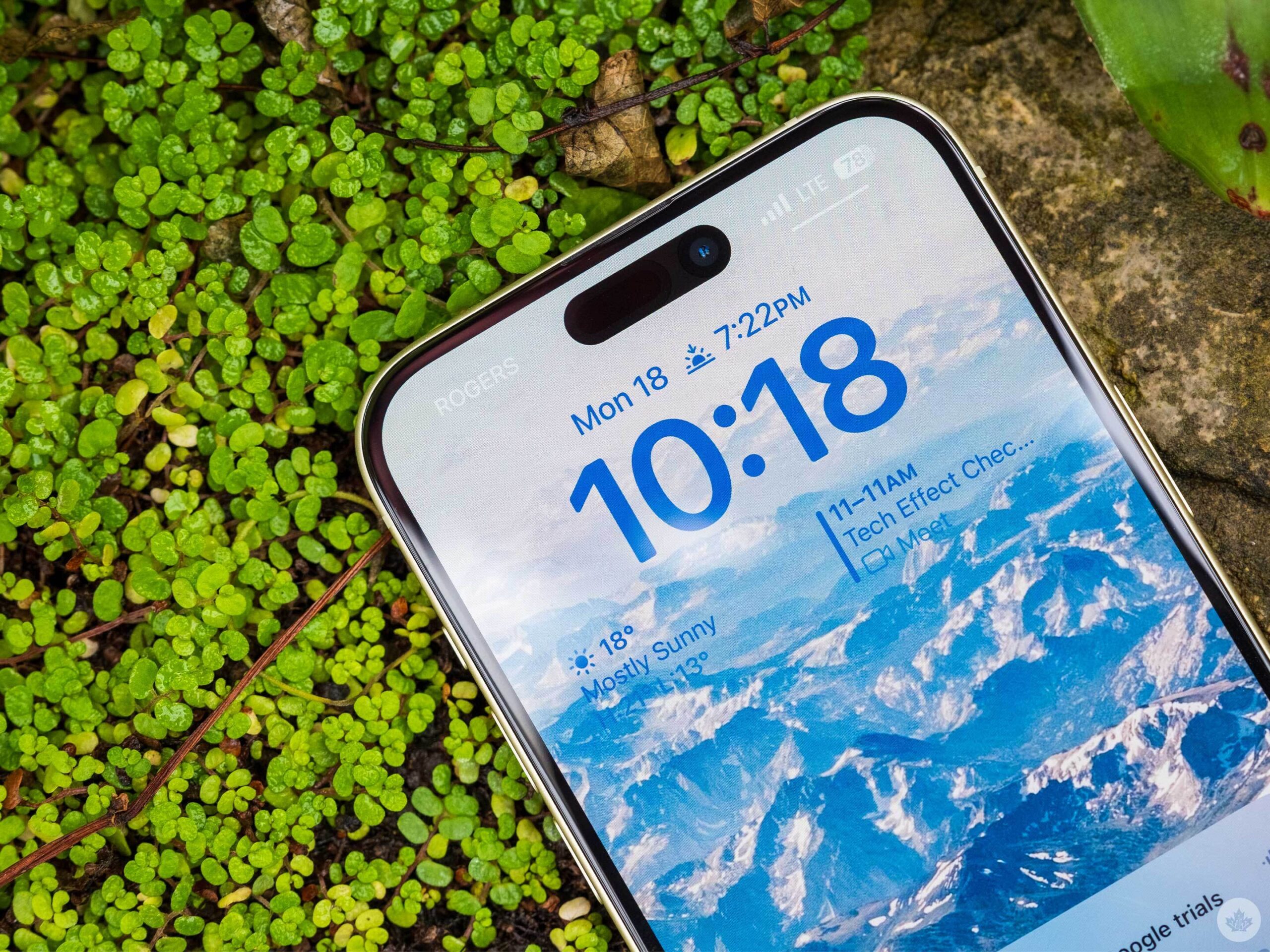
The one to buy (for real this time)
Other than the lack of a higher refresh rate display (I'd be happy with 90Hz), even I see little reason to upgrade to the iPhone 15 Pro this year. The iPhone 15 features 2x zoom through sensor cropping, overall better camera performance, stunning colours alongside a far more premium design than we've seen in the past from Apple's base-level iPhones, and, of course, the Dynamic Island.
All of the features that matter to the average Apple user are here. Arguably, even those who would typically opt for the Pro model iPhone will be happy with the iPhone 15 or 15 Plus (and I count myself among that prestigious group).
Whether you go for the iPhone 15 or the iPhone 15 Plus, you won't be disappointed. This is one of the best all-around smartphone packages Apple has released in years.
Apple's iPhone 15 starts at $1,129 and theiPhone 15 Plus starts at $1,179.
Header image credit: Patrick O'Rourke
Additional reporting from Bradley Bennett
MobileSyrup utilizes affiliate partnerships. These partnerships do not influence our editorial content, though we may earn a commission on purchases made via these links that help fund the journalism provided free on our website.
"This is one of the best all-around smartphone packages Apple has released in years."
MobileSyrup may earn a commission from purchases made via our links, which helps fund the journalism we provide free on our website. These links do not influence our editorial content. Support us here.

